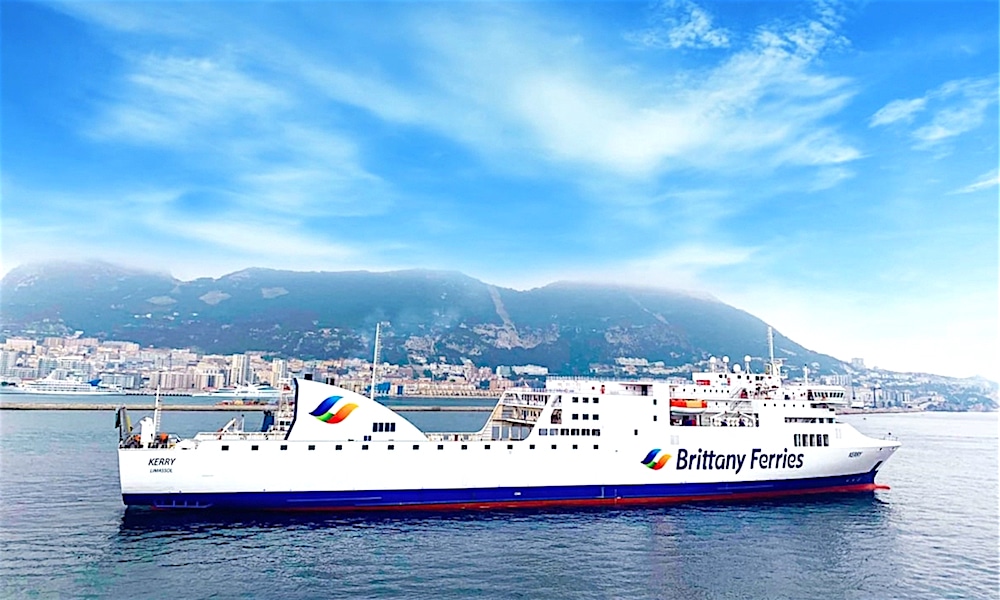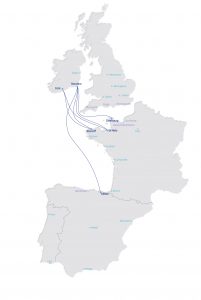
Brittany Ferries has published some of the most disappointing figures in its history, following its AGM in St Pol de Leon, France today. In a year dominated by the Covid crisis and amid on-going Brexit concerns, 2020 passenger numbers fell to less than a third of normal levels. Freight fared slightly better, with figures down by 20 per cent. Company turnover halved, as lockdown measures and restrictions on travel in all markets forced passengers to stay at home.

The report also highlighted issues prompted by Brexit, blaming uncertainty around it for creating uncertainty and anxiety in the marketplace and a reduction of passenger numbers by 5 per cent.
“In the last few years Brittany Ferries faced a double strike, firstly as a consequence of Brexit challenges and then as a result of Covid,” said Jean Marc Roué, company president. “On Brexit, the unfavourable Sterling-Euro exchange rate hit our bottom line. The value of Sterling plummeted directly after the 2016 vote and, since then, the company lost €115 million in potential income as the majority of revenue is generated in Sterling and costs come in Euros.
An independent analysis of the passenger market found that despite the catastrophe of 2020, passenger numbers will recover to 2019 levels by 2022 as well as an improvement in freight volumes. The report also outlined some bright spots in the company’s fortunes, including winning a Brexit-related ferry contract with the UK government and the ongoing development of the “ferroutage” multimodal project, which will make for a seamless link between ferry and rail services in Bayonne and Cherbourg. The company also welcomed two new additions to its fleet – the return of freighter MV Cotentin and the new MV Galicia.
Looking to the future, the report pointed to a four-pillar, five-year recovery plan that includes increased transition to greener energy consumption; a recommitment to France and its sea workers; commitment to farming cooperatives; and on-going support from the regions, banks and government.
Passenger numbers
Last year, Brittany Ferries carried 752,102 passengers. That was less than a third of the total it would carry in a normal year. By comparison, in 2019 it carried 2,498,354 passengers across all routes.
| PASSENGERS BY ROUTE | 2017-2018 | 2018-2019 | 2019-2020 |
| ROSCOFF – PLYMOUTH | 369,605 | 328,133 | 78,445 |
| ST-MALO – PORTSMOUTH | 349,002 | 325,198 | 89,052 |
| CHERBOURG – POOLE | 211,545 | 207,831 | 35,002 |
| CHERBOURG – PORTSMOUTH | 166,910 | 143,506 | 17,394 |
| CAEN – PORTSMOUTH | 929,929 | 914,380 | 357,675 |
| LE HAVRE – PORTSMOUTH | 145,524 | 157,814 | 32,022 |
| Channel | 2,172,515 | 2,076,862 | 609,590 |
| IRELAND/FRANCE/SPAIN | 97,174 | 120,193 | 19,822 |
| UK/SPAIN | 358,272 | 301,299 | 122,690 |
| All lines | 2,627,961 | 2,498,354 | 752,102 |
Freight figures

Brittany Ferries largely returned to its roots as a freight-only operation towards the end of last year. in total it carried 160,377 units in 2020, down around 20 percent on the previous year’s tally of 201,554. Market distortions were caused by stockpiling at the end of the Brexit transition period and amid concerns about new border controls and import/export processes. The Covid crisis also impacted freight volumes, albeit not as significantly as it did for passenger traffic.




